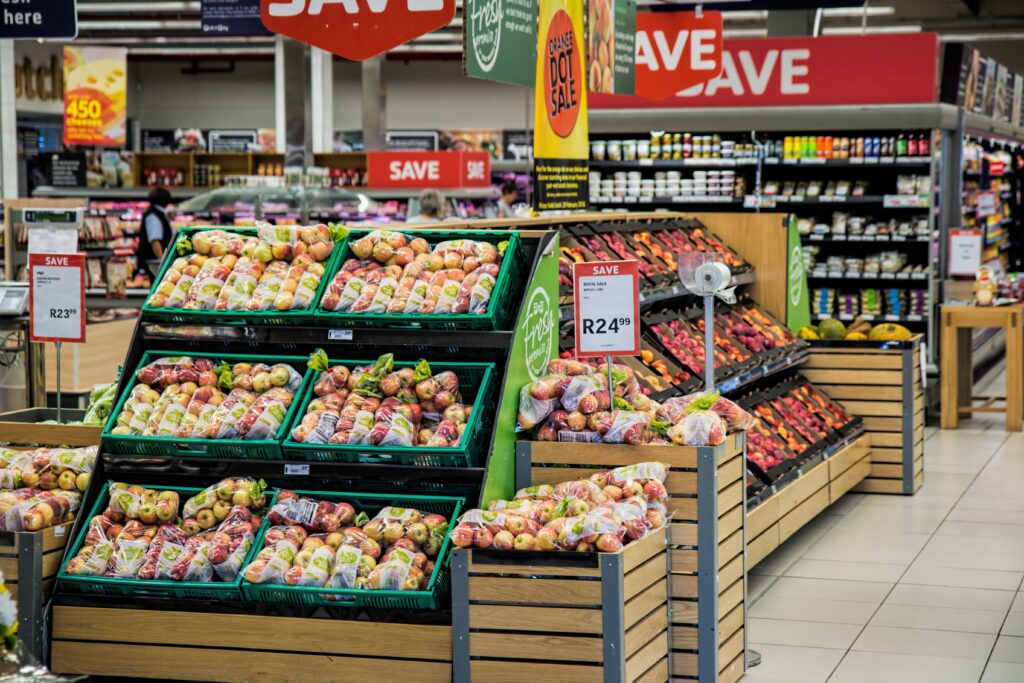Are you struggling to stretch your SNAP benefits each month? With over 1.8 million low-income New Yorkers and countless others across the country depending on the Supplemental Nutrition Assistance Program, making ends meet can be a challenge.
This article will equip you with helpful tips and resources to maximize your SNAP benefits and understand eligibility requirements more clearly. Let’s take the first step together towards extending your food budget!
Key Takeaways
- SNAP benefits are available to low – income individuals and families who meet certain income and resource requirements.
- Benefit amounts are based on household size and income level, and can be calculated by subtracting certain expenses from monthly income.
- To stretch SNAP benefits, consider buying staple foods in bulk, shopping at farmers markets, using coupons and discounts, exploring additional assistance programs, meal planning, and considering online grocery ordering.
- It’s important to stay updated with COVID-19 related information regarding emergency allotments, waivers, non-citizen guidance, and benefit increases that may help extend your food budget.
Understanding SNAP Eligibility and Benefits
To determine eligibility for SNAP benefits, individuals must meet income and resource requirements set by the program. The amount of benefits received is calculated based on factors such as household size, monthly income, and expenses.
Determining eligibility
To check if you can get SNAP benefits, there are some rules. The size of your family and how much money you make are important. Your home and things like cars also count. You may still qualify even if you work or get other help.
To know for sure, apply with your local office or online.
Calculating benefit amounts
Calculating benefit amounts for SNAP can be a bit confusing, but it’s important to understand how it works. Your benefit amount is based on your household size and income level. The more people in your family, the higher your benefit amount may be.
On the other hand, if you have a higher income, your benefits might be lower.
To calculate your SNAP benefits, you’ll need to look at your monthly income before taxes and deductions. You subtract certain expenses from that income to determine what’s called your “net income.” These expenses include things like child support payments or medical expenses for elderly or disabled household members.
Once you’ve calculated your net income, you’ll use that number along with the maximum monthly benefit allotment for households of your size in your state to find out how much assistance you could receive.
Nutrition on a Budget: Boost Food Stamp Benefits<—-
Ways to Stretch SNAP Benefits
Buy staple foods in bulk, shop at farmers markets, use coupons and discounts, explore additional assistance programs, meal plan, and consider online grocery ordering to make the most of SNAP benefits.
Buying staple foods in bulk
One way to stretch your SNAP benefits is by buying staple foods in bulk. When you buy in bulk, you can often get a lower price per unit, which means your benefits will go further. Plus, having a stockpile of essential items like rice, beans, and canned goods can help ensure that you always have food on hand.
Consider shopping at warehouse stores or looking for sales and discounts at your local grocery store. By purchasing in larger quantities, you can save money and make your SNAP benefits last longer.
Shopping at farmers markets
Farmers markets can be a great place to stretch your SNAP benefits and find fresh, nutritious food. At farmers markets, you can often find locally grown fruits, vegetables, and other products at affordable prices.
These markets are usually set up in communities and offer a variety of options to choose from. By shopping at farmers markets, you not only support local farmers but also get access to fresh produce that is good for your health.
It’s a win-win situation!
Using coupons and discounts
To make your SNAP benefits go further, consider using coupons and discounts. Many stores offer coupon programs that can help you save money on groceries. You can find coupons in newspapers, online, or through apps that specialize in providing savings.
By taking advantage of these deals, you can reduce your grocery bill and stretch your SNAP benefits even more. Additionally, some stores offer discounts for certain days or times when shopping is less busy.
Keep an eye out for these opportunities to get even more value from your benefits. Remember to check the expiration dates on coupons and make sure they are still valid before using them.
Exploring additional assistance programs
There are additional programs that can help stretch your SNAP benefits even further. These programs offer extra assistance and resources to low-income individuals and families. Some examples include the Women, Infants, and Children (WIC) program, which provides nutritious food for pregnant women and young children; the School Breakfast Program and National School Lunch Program, which provide free or reduced-price meals to students; and local food pantries or soup kitchens that offer free groceries or meals.
By exploring these additional assistance programs, you can supplement your SNAP benefits with other sources of food support.
Meal planning
Meal planning can help you make the most of your SNAP benefits. By planning your meals in advance, you can ensure that you have enough food for the week and avoid wasting money on unnecessary items.
Start by making a list of the meals you want to cook and create a shopping list based on those recipes. Look for sales and discounts to stretch your budget even further. Consider batch cooking or preparing meals in advance to save time and money throughout the week.
With meal planning, you can eat healthy, nutritious meals while maximizing your SNAP benefits.
Online grocery ordering
Another way to stretch your SNAP benefits is by considering online grocery ordering. Many stores now offer the option to order groceries online and have them delivered to your doorstep.
This can be especially convenient for individuals who may have transportation challenges or limited access to grocery stores in their area. By shopping online, you can compare prices, browse deals, and choose from a wide selection of products.
Additionally, some online retailers even offer exclusive discounts or promotions for SNAP recipients. Taking advantage of this service can help you save time, money, and make the most out of your SNAP benefits.
A Guide to Government Food Assistance Programs<—-
Resources for Other Essentials
Find free or cheap activities and learn tips for lowering bills to help stretch your SNAP benefits even further.

Free or cheap activities
You don’t need to spend a lot of money to have fun! There are plenty of free or cheap activities you can enjoy while stretching your SNAP benefits. Look for local community events like concerts, festivals, or movie nights that offer free admission.
Many parks also offer free or discounted recreational activities such as hiking, biking, or swimming. Take advantage of public libraries where you can borrow books, movies, and even attend workshops and classes for free.
Additionally, there are often low-cost options available for museums, zoos, and attractions in your area. Exploring these activities can help you stay entertained without breaking the bank.
Tips for lowering bills
Saving money on bills is essential for low-income individuals. Here are some easy tips to help you lower your expenses and stretch your budget:.
1. Energy-saving habits: Turn off lights when you’re not using them, unplug electronics when they’re not in use, and adjust the thermostat to save on heating and cooling costs.
2. Water conservation: Fix leaks promptly, take shorter showers, and only run the dishwasher and washing machine with full loads to reduce water usage and lower utility bills.
3. Double-check for discounts: Many service providers offer discounts for low-income households. Check with your utility company or internet provider to see if you qualify for any reduced rates or special programs.
4. Use coupons wisely: Clip coupons from newspapers or download digital coupons from websites or mobile apps to save money on groceries, household items, and personal care products.
Average monthly expenses
To make your SNAP benefits last longer, it’s important to understand your average monthly expenses. These are the costs you have to pay every month for things like rent or mortgage, utilities, transportation, and other essential bills.
By knowing how much you typically spend on these items, you can better plan your budget and allocate your SNAP benefits accordingly. Remember that SNAP is meant to supplement your food budget, so it’s crucial to prioritize your spending and make sure you have enough for all your necessary expenses.
Updates and COVID-19 Related Information
Discover how SNAP has responded to the COVID-19 pandemic, including emergency allotments and benefit increases that could help stretch your food budget.
SNAP emergency allotments
During the COVID-19 pandemic, SNAP has provided emergency allotments to help low-income households. These extra benefits are given to eligible individuals and families to cope with economic challenges caused by the pandemic.
The amount of the emergency allotment is based on household size and can vary each month. This additional assistance can help ensure that people have enough food during these difficult times.
It’s important to stay updated with any changes or updates regarding SNAP emergency allotments in your area so that you can take advantage of this support if you qualify.
SNAP COVID-19 waivers
During the COVID-19 pandemic, SNAP has made some changes to help low-income individuals. These temporary waivers have been put in place to make it easier for people to access and use their SNAP benefits.
For example, there are now more options for online grocery ordering and delivery services. Also, the work requirements have been temporarily suspended, so you won’t lose your benefits if you can’t meet them right now.
Additionally, there have been increased emergency allotments of benefits to provide extra assistance during this difficult time. These waivers aim to support those in need and ensure they can get the food they require without unnecessary barriers or complications.
SNAP non-citizen guidance
If you are a non-citizen, you may still be eligible for SNAP benefits. The Supplemental Nutrition Assistance Program (SNAP) provides food assistance to low-income individuals and families, including non-citizens.
To qualify, you need to meet certain eligibility requirements, such as having a valid immigration status and meeting income guidelines. It’s important to note that applying for SNAP benefits will not affect your immigration status or chances of becoming a U.S. citizen.
So if you are in need of food assistance, don’t hesitate to explore the options available through SNAP, regardless of your citizenship status.
Benefit increases due to COVID-19
During the COVID-19 pandemic, there have been benefit increases for individuals and families who receive SNAP. These increases were put in place to help people cope with the economic impact of the pandemic.
The extra benefits provided are called emergency SNAP (E-SNAP) benefits. They are additional amounts of money added to your regular SNAP benefits. The E-SNAP benefits are given automatically, so you don’t need to do anything extra to receive them.
This increase in benefits can help you buy more food for yourself and your family during these challenging times.
It’s important to note that these benefit increases due to COVID-19 are temporary and may not last forever. However, they can provide some relief during this difficult period. It’s also worth mentioning that eligibility requirements for SNAP may vary from state to state, so it’s a good idea to check with your local SNAP office or visit their website for the most up-to-date information on benefit increases and eligibility criteria.
Remember, if you’re already receiving SNAP benefits, you will continue to receive them even after the emergency allotments end unless your situation changes or it’s time for your regular recertification process.
Conclusion
In conclusion, this comprehensive guide has provided valuable information on SNAP eligibility and benefits. By understanding the criteria for qualification and learning how to stretch your benefits, you can make the most out of the Supplemental Nutrition Assistance Program.
Don’t forget to stay updated with COVID-19 related information and take advantage of any emergency allotments or benefit increases. With these tips, you can navigate the SNAP program effectively and ensure access to nutritious food for you and your family.
FAQs
1. What is SNAP and how does it help low-income households?
SNAP stands for Supplemental Nutrition Assistance Program. It helps low-income individuals and families by providing food stamps through electronic benefits transfer.
2. How can I renew my SNAP benefits?
To renew your SNAP benefits, you should follow the SNAP renewal process detailed in your local food assistance programs.
3. Does income affect my ability to get or extend SNAP benefits?
Yes, monthly income limits are used as part of the eligibility guidelines to see who qualifies for SNAP. These are also known as SNAP income qualifications.
4. Why might someone lose their SNAP benefits?
People may lose their benefits if they fail to meet eligibility requirements, get caught in fraud prevention efforts, don’t renew on time, or misuse the program’s resources.
5. Has there been an increase in SNAP benefit due to COVID-19?
Yes, due to inflation and need during Covid-19 pandemic many received COVID emergency allotments leading to a temporary increase in Snap Benefits.
Source URLs
https://www.cbpp.org/research/food-assistance/a-quick-guide-to-snap-eligibility-and-benefits
https://www.nerdwallet.com/article/finance/snap-food-benefits
https://www.nyc.gov/site/hra/help/snap-benefits-food-program.page
https://otda.ny.gov/programs/snap/
https://georgia.gov/renew-snap-supplemental-nutrition-assistance-program-benefits








